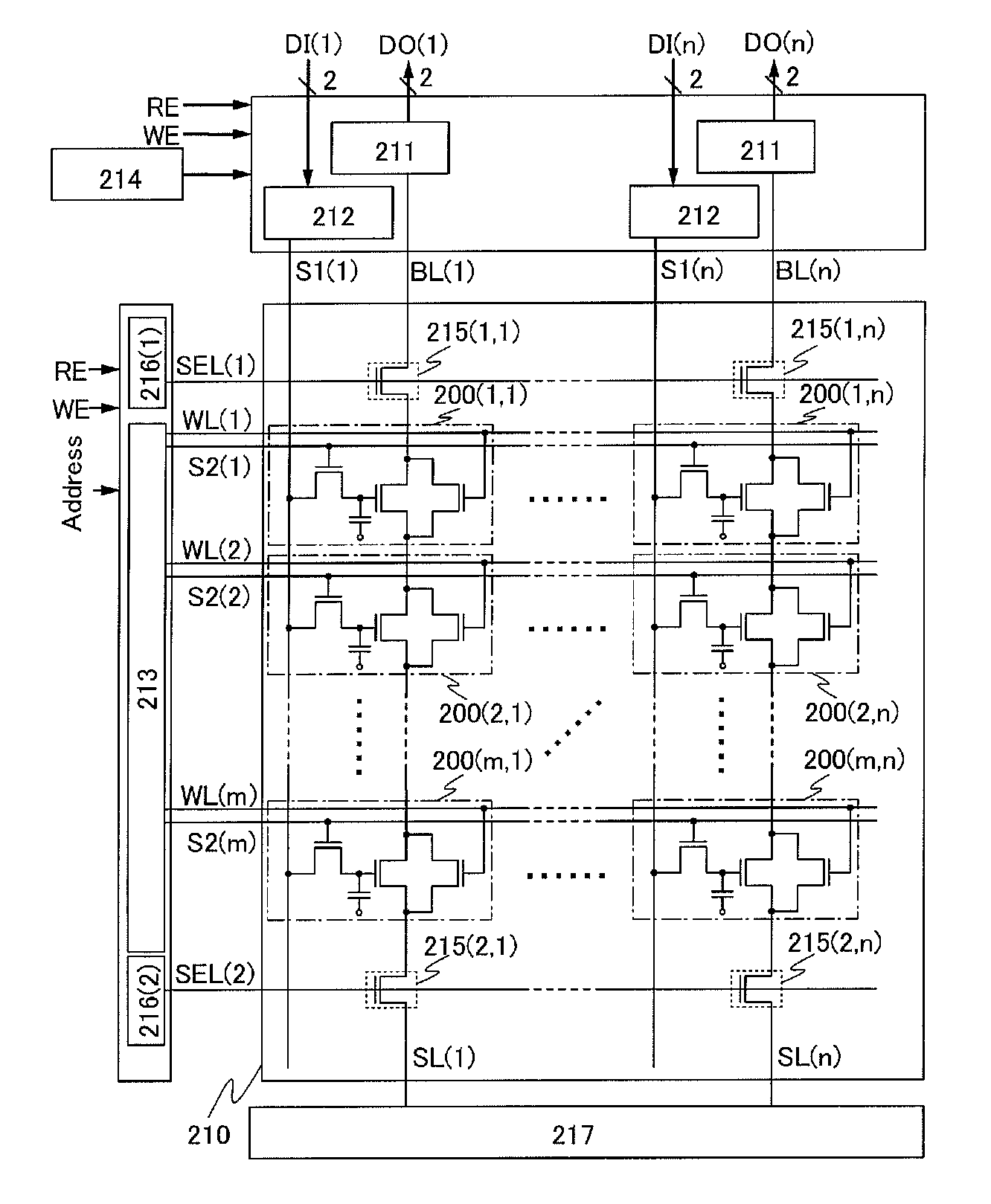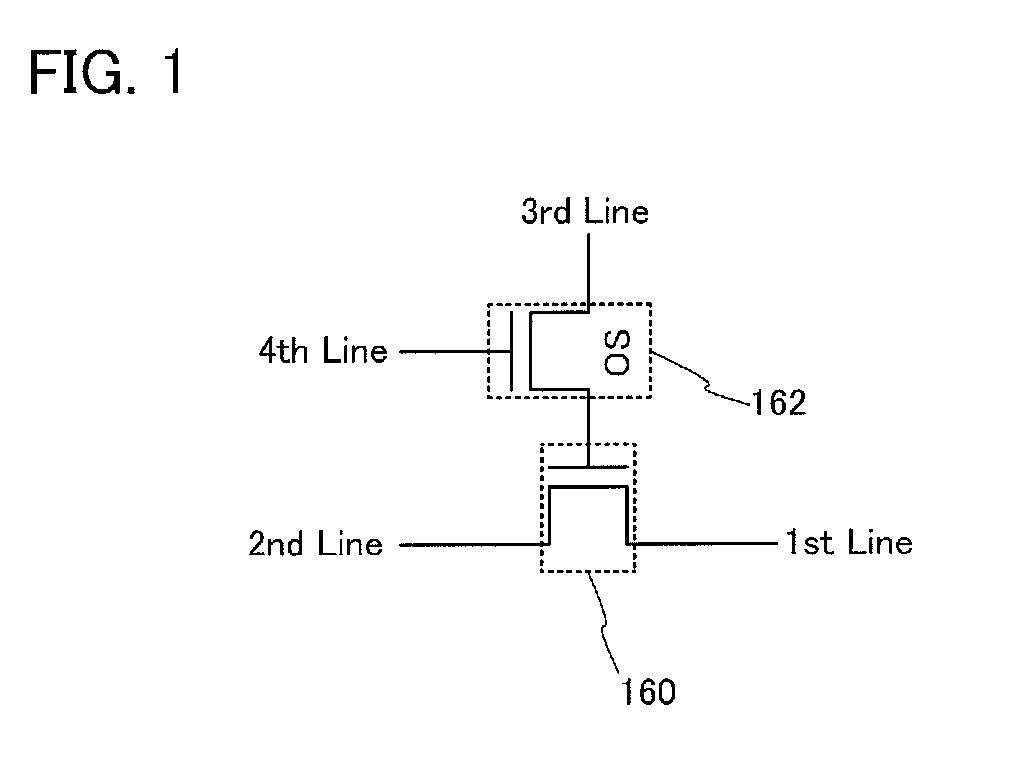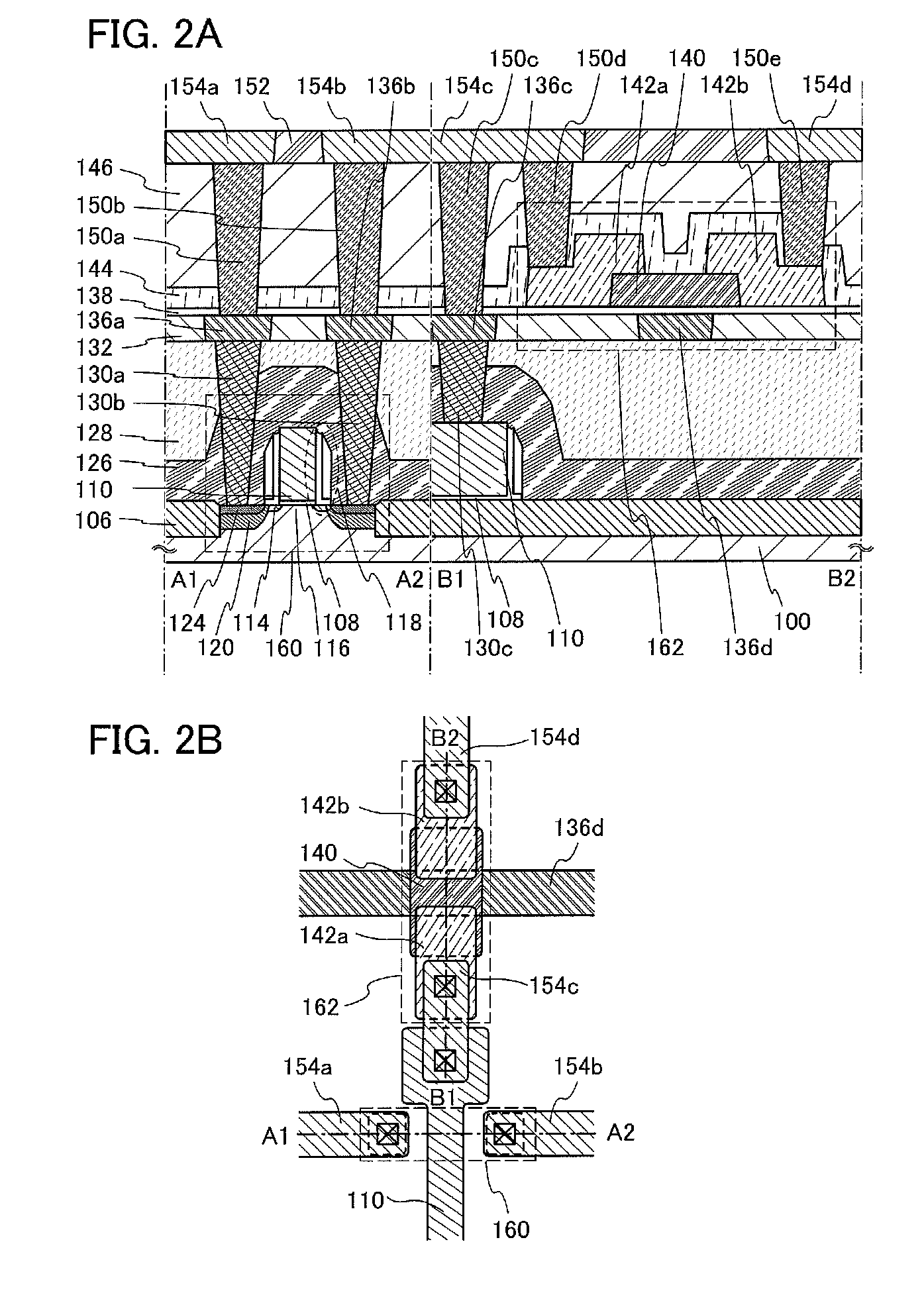Semiconductor device
a technology of semiconductors and semiconductors, applied in the direction of transistors, digital storage, instruments, etc., can solve the problems of short data holding period, difficult to reduce power consumption sufficiently, and loss of stored data, etc., and achieve the effect of easy multi-valued and new structur
- Summary
- Abstract
- Description
- Claims
- Application Information
AI Technical Summary
Benefits of technology
Problems solved by technology
Method used
Image
Examples
embodiment 1
[0071]In this embodiment, structures and manufacturing methods of semiconductor devices according to one embodiment of the disclosed invention are described with reference to FIG. 1, FIGS. 2A and 2B, FIGS. 3A to 3H, FIGS. 4A to 4G, FIGS. 5A to 5D, FIG. 6, FIGS. 7A and 7B, FIGS. 8A and 8B, FIG. 9, FIG. 10, FIG. 11, FIG. 12, FIGS. 13A and 13B, FIGS. 14A and 14B, and FIGS. 15A and 15B.
[0072]FIG. 1 illustrates an example of a circuit structure of a semiconductor device. The semiconductor device includes a transistor 160 which uses a material other than an oxide semiconductor and a transistor 162 which uses an oxide semiconductor. Note that a mark “OS” is added to the transistor 162 in FIG. 1 to show that the transistor 162 uses an oxide semiconductor (OS). This applies also to other circuit diagrams of other embodiments.
[0073]Here, a gate electrode of the transistor 160 is electrically connected to one of a source electrode and a drain electrode of the transistor 162. A first wiring (wh...
modification example
[0199]Modification examples of a structure of a semiconductor device are described with reference to FIG. 12, FIGS. 13A and 13B, FIGS. 14A and 14B, and FIGS. 15A and 15B. Note that in the following modification examples, the structure of the transistor 162 is different from that already described. In other words, the structure of the transistor 160 is similar to that already described.
[0200]In an example illustrated in FIG. 12, the transistor 162 includes the gate electrode 136d under the oxide semiconductor layer 140 and the source or drain electrode 142a and the source or drain electrode 142b which are in contact with the oxide semiconductor layer 140 at a bottom surface of the oxide semiconductor layer 140. Since a plan structure may be appropriately changed corresponding to a cross-sectional structure, only the cross-sectional structure is described here.
[0201]A large difference between the structure illustrated in FIG. 12 and that illustrated in FIGS. 2A and 2B is that connecti...
embodiment 2
[0227]In this embodiment, a circuit configuration and an operation method of a semiconductor device according to an embodiment of the present invention will be described.
[0228]An example of a circuit diagram of a memory element (hereinafter also referred to as a memory cell) included in the semiconductor device is illustrated in FIG. 16. A memory cell 200 illustrated in FIG. 16 is a multivalued memory cell and includes a first signal line S1 (a third wiring), a second signal line S2 (a fourth wiring), a word line WL (a fifth wiring), a transistor 201, a transistor 202, a transistor 203, and a capacitor 205. The transistors 201 and 203 are formed using a material other than an oxide semiconductor, and the transistor 202 is formed using an oxide semiconductor. Here, the transistors 201 and 203 preferably have a structure similar to that of the transistor 160 which is described in Embodiment 1. Further, the transistor 202 preferably has a structure similar to that of the transistor 162...
PUM
 Login to View More
Login to View More Abstract
Description
Claims
Application Information
 Login to View More
Login to View More - R&D
- Intellectual Property
- Life Sciences
- Materials
- Tech Scout
- Unparalleled Data Quality
- Higher Quality Content
- 60% Fewer Hallucinations
Browse by: Latest US Patents, China's latest patents, Technical Efficacy Thesaurus, Application Domain, Technology Topic, Popular Technical Reports.
© 2025 PatSnap. All rights reserved.Legal|Privacy policy|Modern Slavery Act Transparency Statement|Sitemap|About US| Contact US: help@patsnap.com



